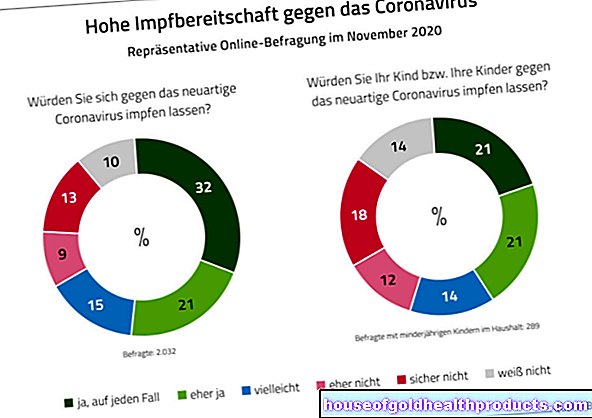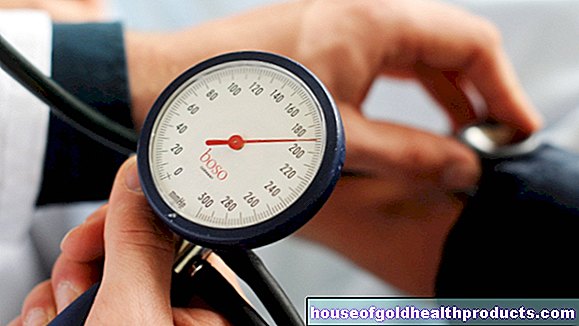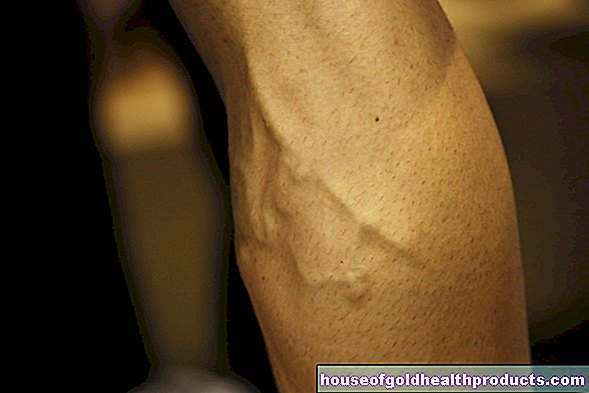Cruciate ligament
Nicole Wendler holds a PhD in biology in the field of oncology and immunology. As a medical editor, author and proofreader, she works for various publishers, for whom she presents complex and extensive medical issues in a simple, concise and logical manner.
More about the experts All content is checked by medical journalists.Without the anterior and posterior cruciate ligaments, the knee would be extremely unstable. The two ligaments strengthen the joint capsule and guide the knee with every movement. You can find out everything you need to know about the tasks of the cruciate ligaments, their exact position in the knee joint and frequent injuries to the cruciate ligaments (such as cruciate ligament ruptures) here!
What is the cruciate ligament?
The cruciate ligament (ligamentum cruciatum) is one of several ligaments that guarantee the stability of the knee joint. Strictly speaking, each knee has two cruciate ligaments: an anterior cruciate ligament (Ligamentum cruciatum anterius) and a posterior cruciate ligament (Ligamentum cruciatum posterius). The two ligaments consist of collagen fiber bundles (connective tissue) and connect the thigh (femur) and shin (tibia). They sit centrally between the joint surfaces of the two leg bones and, as the name suggests, cross one another. The anterior cruciate ligaments pull from the rear outside to the front inside, the rear ones in opposite directions.
Posterior cruciate ligament
The posterior cruciate ligament, which consists of two bundles, is thicker than the anterior and the strongest of all ligaments of the knee joint. It tears at around 80 kilograms. Intra-articularly, it reaches a length of around three to four centimeters and a width of around 13 millimeters.
Anterior cruciate ligament
The anterior cruciate ligament is made up of three collagen bundles that are twisted against each other, similar to the strands of a rope. Compared to the posterior cruciate ligament, it is longer and has less blood flow. It can withstand a load of around 40 kilograms.
What is the function of the cruciate ligament?
The knee joint, with its relatively large articular surface on the thigh and its relatively small articular surface on the shin, is a rather unstable construct. Without the ligaments involved, it would not be functional. In particular, the centrally located cruciate ligaments help the knee - together with the collateral ligaments - to achieve more stability. The two cruciate ligaments strengthen the joint capsule by increasing the contact pressure between the upper and lower leg and maintaining contact during a rotary movement. They guide the knee joint with every movement and ensure that we do not overstretch our shin in the knee joint and that we do not over-turn our lower leg inward. The anterior cruciate ligament stops the lower leg from slipping forward, the posterior cruciate ligament prevents the tibial head from slipping backwards. The posterior cruciate ligaments are primarily responsible for the stabilization of rotation, if only because of their diameter.
Due to their inclined position, the cruciate ligaments - both the anterior and the posterior cruciate ligament - are always tense, regardless of whether we extend or bend the knee. When rotating externally, the cruciate ligaments twist apart; when rotating inward, they prevent excessive inward rotation by wrapping themselves around each other.
Where is the cruciate ligament located?
The cruciate ligaments are one of the central or inner ligaments of the knee. They are located in the joint (intra-articular) between the joint surfaces of the femur and tibia, but attach to the thigh and lower leg bones outside the joint capsule (extracapsular). The cruciate ligaments are surrounded by the menisci. The blood supply to the cruciate ligaments is taken over by the arteria genus media, which runs over the back of the leg to the knee joint.
What problems can the cruciate ligament cause?
As with any ligament, strain, sprain, overstretching and ultimately a tear are possible with the cruciate ligament.
The rupture of the anterior cruciate ligament, in particular, is a relatively common sports injury. Athletes who put a lot of stress on their knees, such as skiers, tennis players or soccer players, are considered to be particularly at risk. Defective cruciate ligaments can manifest themselves as pain, swelling or joint effusion and a feeling of instability. If a cruciate ligament is broken, this often also affects the menisci, the capsule or other ligaments. In the long term, a cruciate ligament tear promotes osteoarthritis.
The doctor receives an initial indication of a cruciate ligament tear via the so-called drawer phenomenon (hyperextension test). If the lower leg can be pulled forward one to two centimeters like a drawer in the flexed position, the anterior cruciate ligament has torn. If it is moved backwards, the posterior cruciate ligament is affected. This becomes particularly clear when the function of the collateral ligaments is also impaired.
Due to the poor blood circulation, injuries to the anterior cruciate ligaments rarely heal on their own and therefore usually require an operation. The posterior cruciate ligaments are mainly affected in falls and accidents with broken bones on the thigh or lower leg (femur fracture, tibial head fracture). Because the posterior cruciate ligament is better supplied with blood, it can heal more spontaneously.
Tags: foot care pregnancy birth baby toddler





























